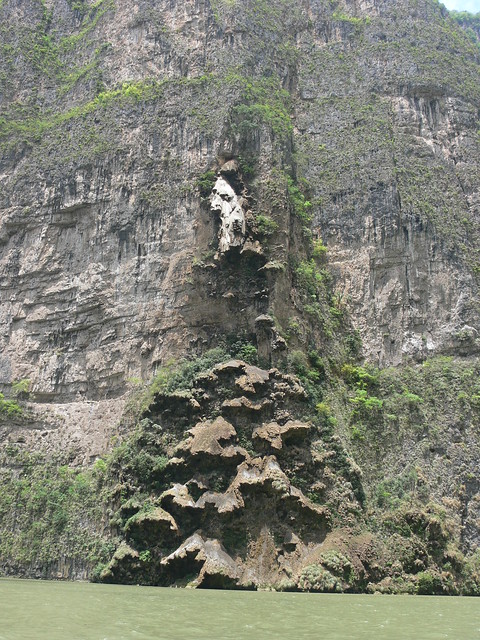 The Chiapas region of Mexico is in the west, near Guatemala, and was once occupied by the Mayan people. The name, which comes from the Chia seed growing in the Sumidero valley was first taken on by the local warriors who even the Aztecs avoided for their fierceness. The Spanish eventually defeated the Chiapas through modern weaponry and allying with nearby enemies. More recently, the valley has been dammed for hydro-power and is 150m deep in places. One village was relocated in the process, which isn’t too bad in comparison to the displacement occurring in other places like India. Chiapas provides a third of Mexico’s power needs and is rich in other resources, but the people are among the poorest in the country.
The Chiapas region of Mexico is in the west, near Guatemala, and was once occupied by the Mayan people. The name, which comes from the Chia seed growing in the Sumidero valley was first taken on by the local warriors who even the Aztecs avoided for their fierceness. The Spanish eventually defeated the Chiapas through modern weaponry and allying with nearby enemies. More recently, the valley has been dammed for hydro-power and is 150m deep in places. One village was relocated in the process, which isn’t too bad in comparison to the displacement occurring in other places like India. Chiapas provides a third of Mexico’s power needs and is rich in other resources, but the people are among the poorest in the country.
We learnt all this within hours of landing in Mexico. Patrick, our guide, has degrees in both history and anthropology and my head has been swimming with stories since we arrived. Fiona and I chose this trip with CultureXplorers as a compromise between my preference for a few genuine intimate interaction with local people and Fiona’s preference for filling up every moment of the trip with relevant experiences and so far it’s been a success.
 Patrick hired a boat and driver to take us out on the river where we saw an eagle searching for food, a kingfisher winging across the valley, cormorants peering into the water, vultures drying themselves on rocks, a black pelican turning its head from side to side, spider monkeys playing in trees and crocodiles sliding into the water to protect their tiny babies from humans. I was amazed to see a diving board near the boat house, but apparently the crocs have learnt to fear humans and it’s generally safe to swim as long as you don’t go too near the nests.
Patrick hired a boat and driver to take us out on the river where we saw an eagle searching for food, a kingfisher winging across the valley, cormorants peering into the water, vultures drying themselves on rocks, a black pelican turning its head from side to side, spider monkeys playing in trees and crocodiles sliding into the water to protect their tiny babies from humans. I was amazed to see a diving board near the boat house, but apparently the crocs have learnt to fear humans and it’s generally safe to swim as long as you don’t go too near the nests.
Debris has collected in one spot, where the current is affected by a waterfall 120m below. Vultures were picking through this and some had gathered around a bovine carcass that had found its way into the watercourse. Unfortunately, the debris was also the final resting place for plenty of plastic since, much like in Bhutan, the locals haven’t yet understood that it doesn’t degrade the way organic scraps do.
The rock formations are also interesting, with one peak towering 1000m above the current water level. It’s primarily limestone, but the white rock is black with moss and pink with minerals in many places. At the far end of the boat ride, moss grows under a waterfall when it stops after the rainy season and then dries in place during the following year. Minerals in the water then collect in the moss and harden to create a new bed for moss. Over thousands of years, the moss and minerals have piled up to create a Christmas tree effect. Unfortunately, only the tip of the tree is still visible above the waterline.